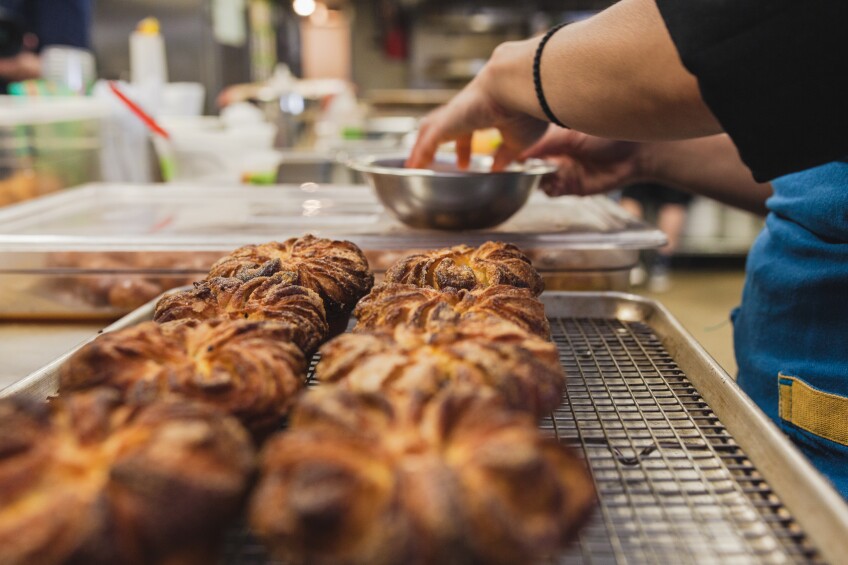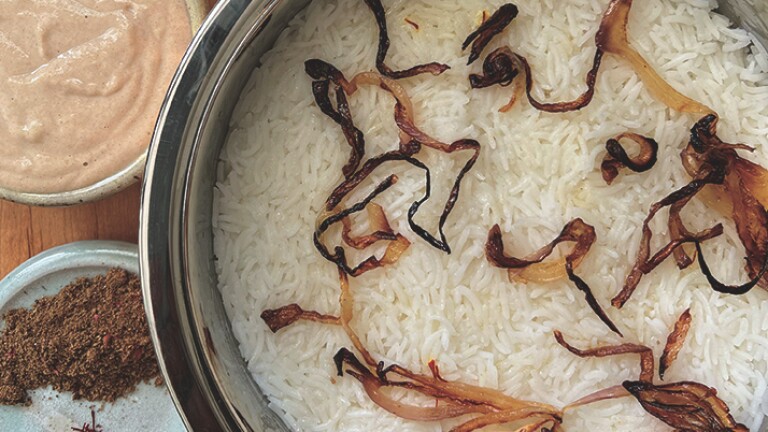“How We Know Who We Are”: A Reflection on Preserving Culture with Chef Isa Fabro


Isa Fabro, like many chefs, is the sum of many parts — born in Canada, raised in Southern California in a primarily Latino and black neighborhood, she is the daughter of Filipino immigrants. She’s a hyphenated American, the culmination of a fusion of cultures: Asian, American, Latin, first world, third world.
A hybrid and a vanguard creating her own vocabulary of flavors, Fabro’s recipes are formed by the many cultures that comprise her experience as a Filipino-American chef. To see Fabro at work in the kitchen is to watch what happens when personal heritage inspires a chef to break rules and conventions, to open the door to their personal world and share it with others. In Fabro’s own words, the Filipino pastries she creates at Unit 120 come from a deep sense of cultural pride and appreciation.
“Part of the enjoyment for me [in] cooking and enjoying these foods is knowing it is in my blood, and that I am able to create these foods to the best of my ability and share them with everyone,” Fabro tells me. “As a first generation immigrant, the foods I grew up with and rediscovered on my trip to the Philippines are a living history. The pinakbet recipe I have from my mom was taught to her by her parents, who were taught by theirs, and have established a personal legacy for me to instill to the next generation.”
“This is how we know who we are, where we come from, and how we show our love,” she says.
Interview conducted by Oriana Koren
Can you share a little about your background: where you grew up, and how being first generation Filipino-American informed your life and work?
Growing up, my family wanted me to assimilate into American culture, so I grew up being told you have to be American and I was never taught tagalog. I grew up in Southern California in a largely Latino and black community; so outside of my family, my main connection to my Filipino culture was through the food. I visited the Philippines back in February and really wished I could communicate in tagalog. But then when I ate the different foods — things that were super seasonal, super regional (everything is made in-house using what you have, making it taste as delicious as possible) — I felt like I should know what these dishes were, but I didn’t. So exploring the Filipino palate is a way to a language — a food language.
How did you get started in the kitchen?
I started cooking for my family around seven, and I watched a lot of cooking shows on PBS. I continued cooking through high school, and didn’t work in food until my mid-20s — I used to work in film and music. Around this time, I got really sick and was recovering from an illness; machines were hooked up to me and I was just laying there thinking about things and trying to figure out what I wanted to do. I realized I would be happy cutting carrots all day. So then I [became] a line cook. After seven years, my back went out twice and I was told if I kept cooking in the kitchen, my back would only get worse. That’s when I moved from savory to pastries, which I was already interested in from watching pastry chefs in the kitchen. But it was also sad because I wasn’t expecting to make that change — especially due to my health. After this year, it’ll be my fourteenth year of cooking.

How has your residency at Unit 120 changed your accessibility to the people you’re feeding?
Normally the guests I would cook for would be a clientele who could afford a certain price point, where the final bill was $300 to $400. That’s a small population, especially in Los Angeles; the fine dining scene isn’t as big in L.A. as it is in other places. Being able to make food out of Unit 120 has provided me the opportunity to produce a similar quality of food, and use my technique and skills that apply to those fine dining desserts — yes, I’m doing donuts and the halo-halo (a Filipino shaved iced dessert). They are simple desires, but they are no less delicious; and I’m able to serve delicious food to more people. It’s only been a year since I started making Filipino desserts, so I can explain to guests what I’m making. If somebody is going to make this kind of food, it’s going to be me. The equations are all there: I am Filipino-American, I have the training, and it means something to me.
Unit 120 is a part of the Far East Plaza complex and there is a lot of really interesting food being made here. But unlike in other neighborhoods that are gentrifying, Chinatown seems to be on the brink of a renaissance started mainly by young, Asian chefs looking to tap into their cultures to reclaim that food — or get to know it. Do you think serving your pastries here is doing that as well?
In hindsight, the timing of things has been very interesting. The group of Filipino-American chefs who work here all started hanging out last year, and that coincided with the Filipino food movement. A lot of good things started happening within the group. Alvin [Cailan] works very closely with George Yu, who is a big part of the Chinatown community, and specifically what goes on in this plaza. Everyone who is connected with food in this plaza is offering something unique, so Far East Plaza is becoming this epicenter of rich, cultural backgrounds, and exploring individual heritages through really good food. It’s amazing!
Outside of having a good pastry, what else do you hope folks take away when they have your creations?
That it was something they’ve never had before. Possibly if they had any ideas of what Filipino food was and then they tried my food, maybe their response would be, “This is not what I was expecting,” or “I know what ube is, but I’ve never had it like this before.” I do try to be playful with the desserts I make, and I want people to think about what they are eating. I hear all the time, “You should charge more for this,” but it’s more important for me to have people be able to try it. I’m not paying any staff; it’s just me, so I can sell my pastries at the price I set.






